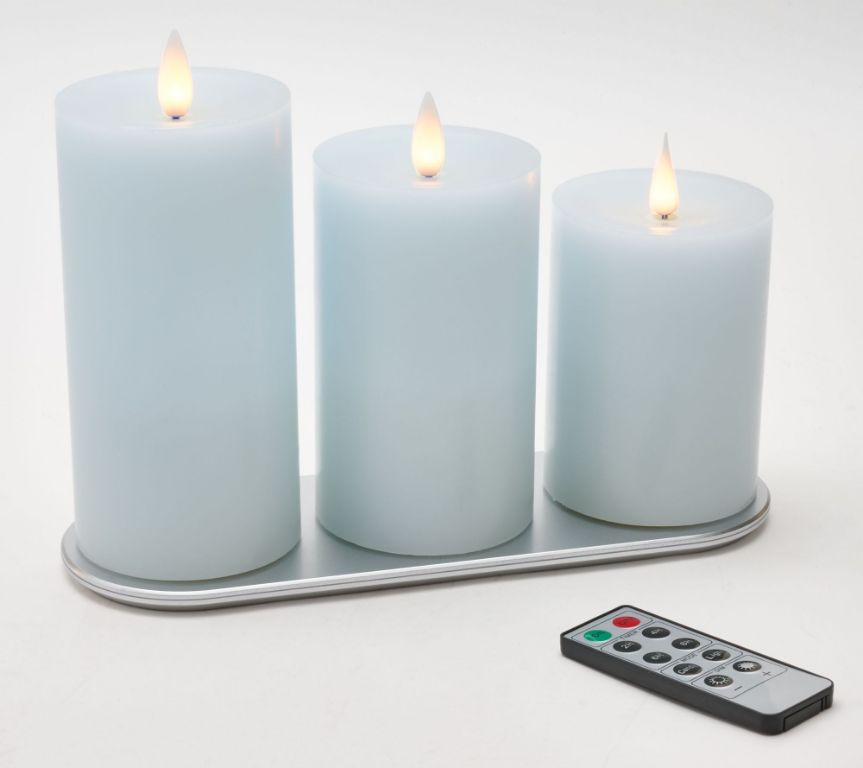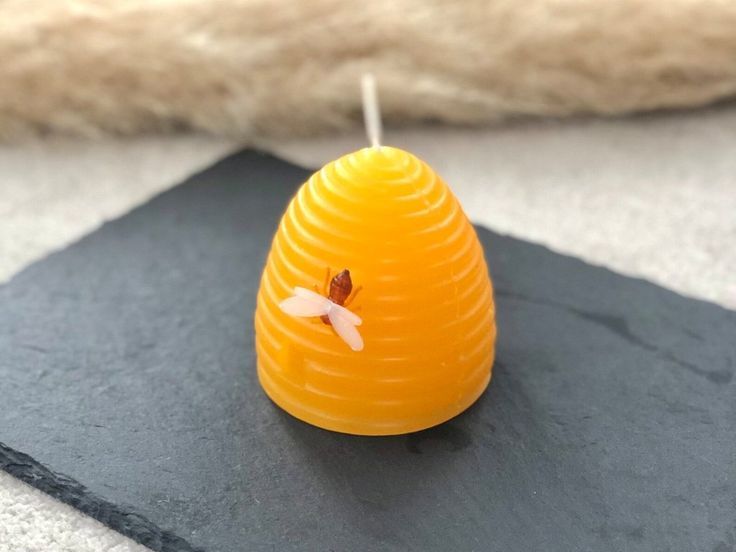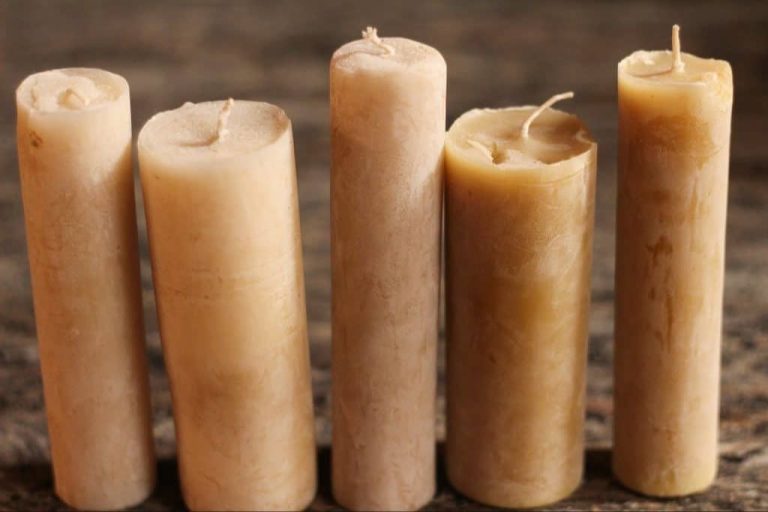What Is Pillar Of Bliss Wax?
What is Pillar of Bliss Wax?
Pillar of Bliss wax is a proprietary blend of paraffin and soy waxes developed and manufactured by Nature’s Garden [1]. It contains over 50% soy wax along with paraffin wax to create a versatile wax that works well for candles, especially poured votives and pillars.
Pillar of Bliss gets its name from its reputation for being easy to work with and producing successful results. The blend allows the wax to hold fragrance oils better than straight paraffin while also being harder and smoother than plain soy wax [2]. It offers the performance of paraffin with the appeal of a natural soy component.
The Pillar of Bliss formulation has a higher melting point than soy wax, ranging from 130°F to 145°F, allowing it to hold its shape well when poured. It also has excellent glossy finish for appealing candle aesthetics. Overall, it provides a great balance of properties that make it a versatile, easy-to-use wax.
History
Pillar of Bliss wax was developed in the early 1900s by the Pillar Candle Company (Source: https://www.naturesgardencandles.com/candle-making-supplies/shop/candle-wax/blended-wax/pillar-bliss-wax). The company invented the wax blend specifically for making pillar candles, which were popular decorative items at the time. The original formula was designed to produce candles that were easy to release from the mold and had a smooth surface finish.
Chemical Composition
The main ingredient in Pillar of Bliss wax is paraffin wax, which makes up 40-60% of the total composition. Paraffin wax is a petroleum-based wax made from refining crude oil. It consists of straight chain hydrocarbons with 20 to 40 carbon atoms (C20 to C40). The exact chemical composition can vary between paraffin wax manufacturers.
The other key ingredient is soy wax, which makes up around 40-60% of Pillar of Bliss. Soy wax is made from hydrogenated soybean oil. It contains fatty acids like palmitic, stearic, oleic, linoleic, and linolenic acids. The chemical composition depends on the soybean variety and production process.
Some versions of Pillar of Bliss also contain microcrystalline wax, vybar, and other proprietary additives in small amounts. These are added to modify the properties of the wax like melting point, hardness, and texture.
Overall, the exact formula and ratios of the chemical composition can vary between Pillar of Bliss wax brands. But paraffin and soy wax make up the bulk of the wax blend. The combination allows Pillar of Bliss to have the high melting point of paraffin with the flexibility of soy for candle making.
Manufacturing Process
Pillar of Bliss wax is manufactured through a process called fractional distillation of petroleum. This involves heating crude oil to high temperatures, causing it to evaporate. The vapors are then cooled and condensed back into liquids, which are separated into fractions or compounds based on boiling point and molecular weight.
To make Pillar of Bliss wax specifically, the heavier paraffin compounds are isolated through the fractional distillation process. These are then combined with soy wax and other proprietary ingredients by the manufacturer to create the final Pillar of Bliss wax product. The exact ratios and blend of ingredients are often trade secrets held by the candle making suppliers.
So in summary, Pillar of Bliss wax starts as crude oil, which is carefully heated and separated to extract the right mix of paraffin compounds. It is then blended with soy wax and other additives through a proprietary process to create the versatile candle wax we know as Pillar of Bliss.[1]
Properties
Pillar of Bliss wax has some unique properties that make it a popular choice for candle making. According to Nature’s Garden Candles, it has a low melting point of 130-145°F, which allows it to liquify at relatively low temperatures for easy pouring into molds and containers.
The texture of Pillar of Bliss is smooth and creamy when melted, which produces attractive glossy candles. When cooled, it forms a smooth, opaque surface. The wax hardens into a dense, rigid pillar that retains its shape well when burned.
One of the benefits of Pillar of Bliss wax is its ability to hold fragrance oils extremely well. The soy wax component helps anchor scents, while the paraffin provides excellent scent throw. This allows candle makers to create strongly scented candles. According to VACandleSupply, candles made with this wax have excellent hot and cold scent throw.
Uses
Pillar of Bliss wax is commonly used for making candles, especially container candles, votives, pillars, and wax melts.[1] Its versatility and ability to hold fragrance makes it ideal for candle making. The wax can be poured into molds at temperatures between 150-165°F to create molded candles and wax shapes.
Pillar of Bliss is also popular among crafters and artists. The wax can be used to make wax melts, embeds, ornaments, and other candle accessories.[1] It has a smooth texture that allows for intricate designs. The wax cures with a matte finish that takes colorants and fragrance oils well. These properties make it a good choice for arts, crafts, and home decor projects.

[1] “Pillar of Bliss Wax.” Nature’s Garden Candles, www.naturesgardencandles.com/candle-making-supplies/shop/candle-wax/blended-wax/pillar-bliss-wax.
Benefits
Pillar of Bliss wax is often preferred over other candle waxes for several reasons:
It has a high melting point of 135°F, which allows candles to retain their shape in warm environments (Source). The wax melt point is customizable by adding vybar or stearic acid.
The soy wax component makes Pillar of Bliss an eco-friendly, natural wax option. Soy wax is made from soybeans, a renewable resource (Source).
It has great scent throw and retention compared to paraffin wax alone, due to the soy wax. This allows fragrance oils to be strongly detectable when burning (Source).
The blend of soy and paraffin allows the wax to have a smooth, glossy finish that results in beautiful candles. The soy component helps anchor fragrance, while the paraffin allows self-adhesion for a smooth exterior.
Pillar of Bliss wax is easy to work with compared to 100% soy wax. It has a pliable consistency at room temperature that makes pouring simple.
Drawbacks
Some potential drawbacks and limitations of pillar of bliss wax include:
Brittleness and cracking – Pillar of bliss can become brittle and prone to cracking, especially in colder temperatures. This makes it less ideal for candles that will be exposed to big temperature swings. Some users report more brittleness and cracking issues with certain batches of the wax (Soapmaking Forum).
Scent throw – The soy wax content in pillar of bliss can make it more difficult to achieve a strong scent throw compared to paraffin wax. Extra fragrance oil may be required to get the desired scent strength (Nature’s Garden Candles).
Higher cost – Pillar of bliss is more expensive than plain paraffin wax. The soy wax content increases the cost. This can make it less ideal for large volume production or low budget projects.
Limited availability – Pillar of bliss may be harder to source than pure paraffin or soy wax, as it is produced and sold by a smaller number of specialty suppliers. Lead times for orders may be longer.
Higher melting point – The paraffin component gives pillar of bliss a higher melting point than plain soy wax. Extra care must be taken to avoid overheating or scorching when melting the wax.
Safety
When handling Pillar of Bliss wax, there are some safety precautions to keep in mind:
Wear gloves, long sleeves, and eye protection when pouring hot wax to avoid burns. Never leave melting wax unattended. Ensure your workspace is well-ventilated and free of any ignition sources. According to one source, paraffin wax fumes can be irritating if inhaled over long periods, so avoid breathing in vapors directly over melted wax [1].
While burning, Pillar of Bliss candles give off the same emissions as other paraffin-based candles. These can include some potentially harmful volatile organic compounds like benzene and toluene. Make sure to trim wicks to 1⁄4 inch before lighting and keep candles in a well-ventilated area. Never leave burning candles unattended.
In general, follow basic fire safety rules. Keep candles away from flammable materials, out of reach of children and pets, and extinguish entirely before leaving the room. With proper handling, Pillar of Bliss wax candles can be safe for home use.
Popular Brands
Some of the top manufacturers and brands for Pillar of Bliss wax are:
Nature’s Garden [1] – Nature’s Garden offers their own proprietary blend of Pillar of Bliss wax made from a mix of soy wax and paraffin. It is one of the most well-known and widely used Pillar of Bliss wax brands.
IGI Wax [2]– IGI 6006 is another popular paraffin/soy blend similar to Pillar of Bliss that works well for container and pillar candles.
Golden Brands [3] – Golden Brands makes their own Pillar of Bliss in a paraffin and soy blend sold under the Golden name brand.





